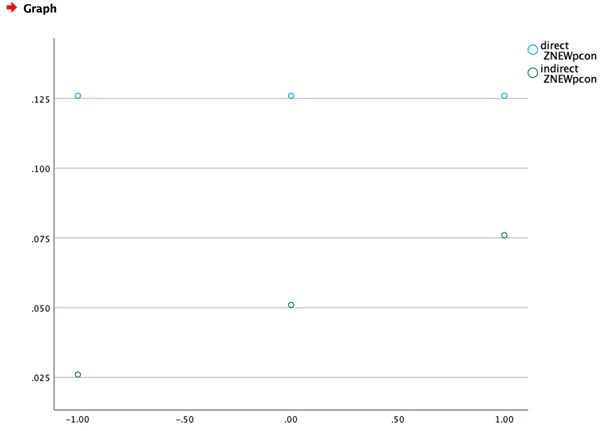Problem Description
The assignment's objective is to investigate moderated mediation using the Johnson-Neyman technique within the context of a specific research study. The study, focusing on a particular SPSS data file, explores the effects of X (performance climate) on Y (doping temptation) mediated by M (positive attitudes toward doping). The key challenge is to analyze how the relationship between X and Y, mediated by M, varies based on a moderator variable W (perfectionistic concerns).
Sample Assignment Solution:
In this assignment, we will explore the concept of moderated mediation using the Johnson-Neyman technique within the framework of a specific research study. Our study, represented by the SPSS data file "FINAL analysis, bootstrapped moderated mediation using z values, conditional table means, and SD," investigates the dynamics between a performance climate (X), doping temptation (Y), and the mediating factor of positive attitudes toward doping (M), while considering the influence of perfectionistic concerns (W) as a moderator.
Syntax for Probing Moderated Mediation:
To examine the impact of X on Y through M with the influence of W, we will employ the Johnson-Neyman (JN) technique. Below is the syntax for conducting this analysis in SPSS PROCESS:
process y=ZNEWsusc/x=ZNEWperf/w=ZNEWpcon/model=1/jn=1/plot=1 .
Additionally, to calculate the indirect effect of X on Y through M, the following formula will be used:
ab3 = a(b1 + b3W) = ab1 + ab3W
SPSS PROCESS will provide the necessary output, which includes regression coefficients. In the context of our fourth empirical study, focusing on the effects of performance climate on doping temptation through attitudes, we used the following regression coefficients to calculate the indirect effect of X on Y through M:
ab3 = 0.184(0.276 + 0.138W) = 0.051 + 0.025W
This allows us to represent ab3 as follows: ab3 = 0.184(0.138W) = 0.025W
Table: Conditional Indirect Effect of Performance Climate (X) on Doping Temptation (Y) Through Positive Attitudes Toward Doping (M) for Various Perfectionistic Concerns (W):
| Concerns (W) | a (Direct Effect) | aM (Indirect Effect) | Total Indirect Effect |
|---|---|---|---|
| -1.000 | 0.184 | 0.137 | 0.025 |
| 0.000 | 0.184 | 0.276 | 0.051 |
| 1.000 | 0.184 | 0.414 | 0.076 |
Creating a Visual Representation:
To visualize the direct and indirect effects, the following syntax can be utilized:
data list free/ZNEWpcon .
begin data .
-1.000
0.000
1.000
end data .
compute indirect=0.051+0.025*ZNEWpcon .
compute direct=0.126 .
graph/scatter(overlay)=ZNEWpcon ZNEWpcon WITH direct indirect (pair).

Fig 1: Scatter/graph showing the direct and indirect effects of performance climate on doping temptation
This syntax will generate a visual figure that encapsulates the direct and indirect effects, helping to better understand the complex relationships between X, Y, M, and W.
By following these steps, you can effectively explore moderated mediation effects in your research study and visualize the results for a more comprehensive understanding of the dynamics between the variables involved.